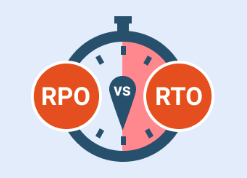We are excited to introduce MSP360 Managed Backup 7.9 with enhanced license management, improved monitoring accuracy, and expanded storage options. Continue reading
OpenStack Keystone Verification Explained
To continue our conversation about authentication and authorization, we took a decision to consider OpenStack Keystone. This technology allows to make sure of the user’s identity and enhance the security of requests sent to OpenStack Services API without making outside access more complicated.
This article will be of use to everybody who wants to get an idea about OpenStack authentication and take a close look at its basic principles and logic. Continue reading
Google Cloud Storage vs Google Drive: Detailed Comparison
We are going to consider two popular Google backup solutions: Google Drive and Google Cloud. Are they the same? No, of course not: there are obvious differences in the operating principles and opportunities. To understand the point, let’s briefly review their features.
Continue reading
How to Speed Up Data Retrieval from Google Cloud Storage Nearline with On-Demand I/O
On-Demand I/O is the Google Cloud Storage Nearline feature that allows you to speed up information retrieval. If you’re not satisfied with the standard reading throughput of 4MB/s per 1TB of stored data you can switch it on to boost the download speed. The typical use case for On-Demand I/O is a disaster recovery, when you need to restore some crucial data as soon as possible.
How to Back Up to Google Nearline
Google Nearline Storage is a low-cost storage service that can be used for data archiving, online backup, and cloud disaster recovery. Data is available instantly, not within hours or days. This makes Nearline perfectly suitable for the storage of large amounts of infrequently accessed data which, nevertheless, can be accessed and retrieved quickly whenever necessary.
In other words, Google Nearline is a perfect place to store your backups. However, bear in mind, that Google Nearline is one of the three different storage classes within Google Cloud Storage. In this article, we will show how to set up backup to Google Nearline with MSP360 Backup
Image-Based Backup Feature in MSP360 Backup 4.2
We are excited to announce that starting from this release, Windows Server backup software by MSP360 supports Image-Based Backup feature that significantly extends the capabilities of existing "Bare metal and System state" backup!
Temporary Restore from Glacier
After the object has been archived using the Glacier storage option, the object's data will be removed from S3 but its index entry will remain as-is. The S3 storage class of an object that has been archived in Glacier will be set to GLACIER.
The advantages are reduced costs of storage. However, if you wish to retrieve these objects you need to plan in advance because of the restore times associated with Glacier storage.
How to Configure IAM Users for Amazon Glacier
Below is a guide on how to:
- Configure multiple users with limited access to Amazon Glacier account using CloudBerry Explorer
- Generate individual Access and Secret Keys for each user in CloudBerry Explorer
- Сonfigure CloudBerry Backup to use AWS IAM user account.









